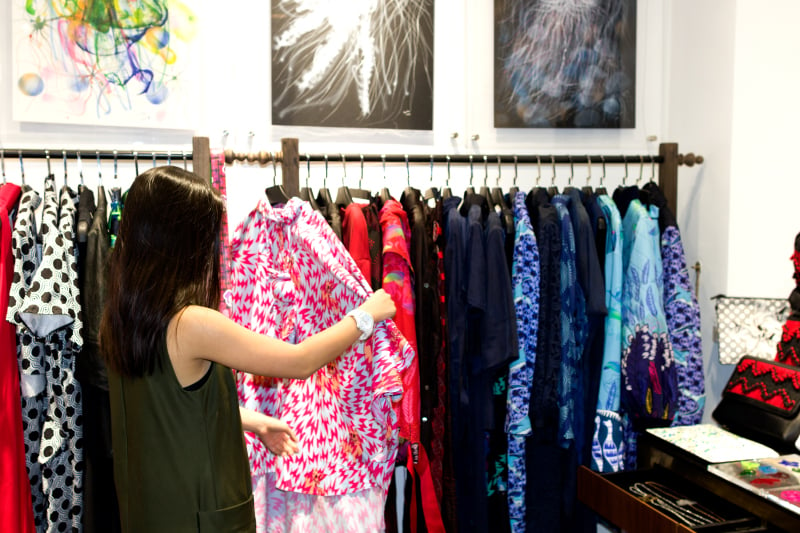Meet Polly Ho, the Hong Kong designer redefining the 300-year heritage behind Canton silk as a co-founder of fashion company Loom Loop.
From New York to Tokyo, Shanghai to Paris, award-winning fashion designer Polly Ho is carrying the torch of Hong Kong’s history across the globe with her collections. Together with Andy Wong, the duo are the brains and creativity behind Loom Loop, a fashion label that draws inspiration from Chinese folklore legends to create clothing that bridges the past with the present. “I named the brand Loom Loop because I wanted to do everything from the basics first. Loom is the weaving; Loop is the knitting,” explains Polly of their venture. Selected in 2017 for Lane Crawford’s Cage programme, an intensive 12-week ignition programme that mentors startups, Loom Loop is now in its fourth year. Here we learn about how Polly Ho is connecting Hong Kong with its own cultural heritage.

At the age of five, Polly was already experimenting with fabrics. “I always knew then I wanted to be a fashion designer,” she recounts, “I was constantly playing dress up with my sister, wrapping blankets around her to make her look like a princess.” Four years ago, she embraced her dream fully with the creation of her own brand, though she warns, “Behind the scenes, it is a lot of work. For me, the creative part is the easiest – the most relaxed, chill thing. Besides that, you have to do the marketing, the PR, everything.”

Loom Loop first began in 2013 with a shop in Hong Kong’s historical center PMQ in Soho, launching its first collection shortly after in 2014. Earlier this year, they opened a second store in the former Central Police Station Tai Kwun in the heart of the city. Having broken even in its second year, the company puts a modern twist on fashion for men and women, crafting many of their designs in Canton silk, a hand-dyed fabric from Guangzhou with centuries of history. “We only make a few pieces of each style,” Polly elaborates, “If we don’t have your size, we can make it for you, but you have to wait. It’s not fast food. I want my customers to treasure it every time. If you wear it, maybe one day, you’ll pass it onto your children. You have to remember where you bought it and why.”
Today, Loom Loop stands as a bridge between the living and the intangible cultural heritage that so often goes unmentioned. “I wanted to remind people to not assume that traditions will be there forever, because, one day, they might disappear,” explains Polly. “You have to treasure everything you have. That’s the brand.” Promisingly, Hong Kong has moved towards a greater appreciation of heritage in recent times. As Polly remarks, “10 years ago, they didn’t really care. Now it’s about finding something unique. People want to hear the story behind the scenes, not just buy a product.”

Alongside the preservation of heritage, sustainability, too, is a theme close to Polly’s heart, having seen first-hand the excesses of the fashion industry. “I worked in the sweater industry for quite a long time,” she says. “Factories have loads of leftover yarn, and, if you use it, you get a better price whilst also helping them solve a problem. I’m a very small company. Even a little swatch, I’ll use to cover the buttons, because we can’t afford to have any wastage. I don’t want to produce any new rubbish.”
As the co-founder of a fledgling business, Polly admits it can be a struggle. “These four years, I’ve been working every day. Last year, it was crazy. I had five shows in Taiwan, Thailand, Paris, Tokyo, Shanghai, and all at the same time. I wanted to throw up sometimes. People would call me, and I wouldn’t even remember what we’d talked about. When you’re a very young brand, if people give you opportunities, you won’t say no.” Next, she plans to focus on Paris and Shanghai to garner additional international publicity and brand recognition.
When pressed for a definition of success, Polly opines, “I’m still working hard. I don’t want to define success. I don’t want to limit myself. I want to keep going to reach that peak, but for now, I’m still climbing.”





